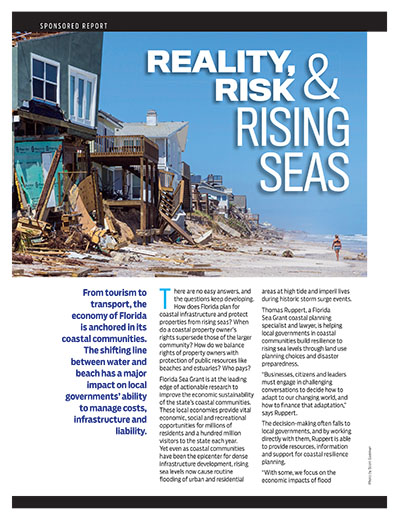The Florida Sea Grant Coastal Planning Program supports Florida Sea Grant’s mission of using academic research, education and extension to foster a sustainable coastal economy and environment.
The Coastal Planning Program assists and provides resources for local governments addressing coastal hazards through their planning process, including land use planning, hazard mitigation planning, and emergency planning.
Florida’s coastlines define Florida for many residents and visitors. Even as Florida’s coastal areas offer great beauty and diverse natural habitats, they also present many potential hazards to human development and communities.
This website provides information and resources on coastal hazards for the local government attorneys, land use planners, and coastal managers that address these hazards in their work. The focus here is on sea-level rise and adaptation with additional information on the related hazards of storms and storm surge, coastal flooding, and erosion. Florida Sea Grant is building a cache of resources for local governments that incorporates both original research and links to resources from other organizations and researchers.



